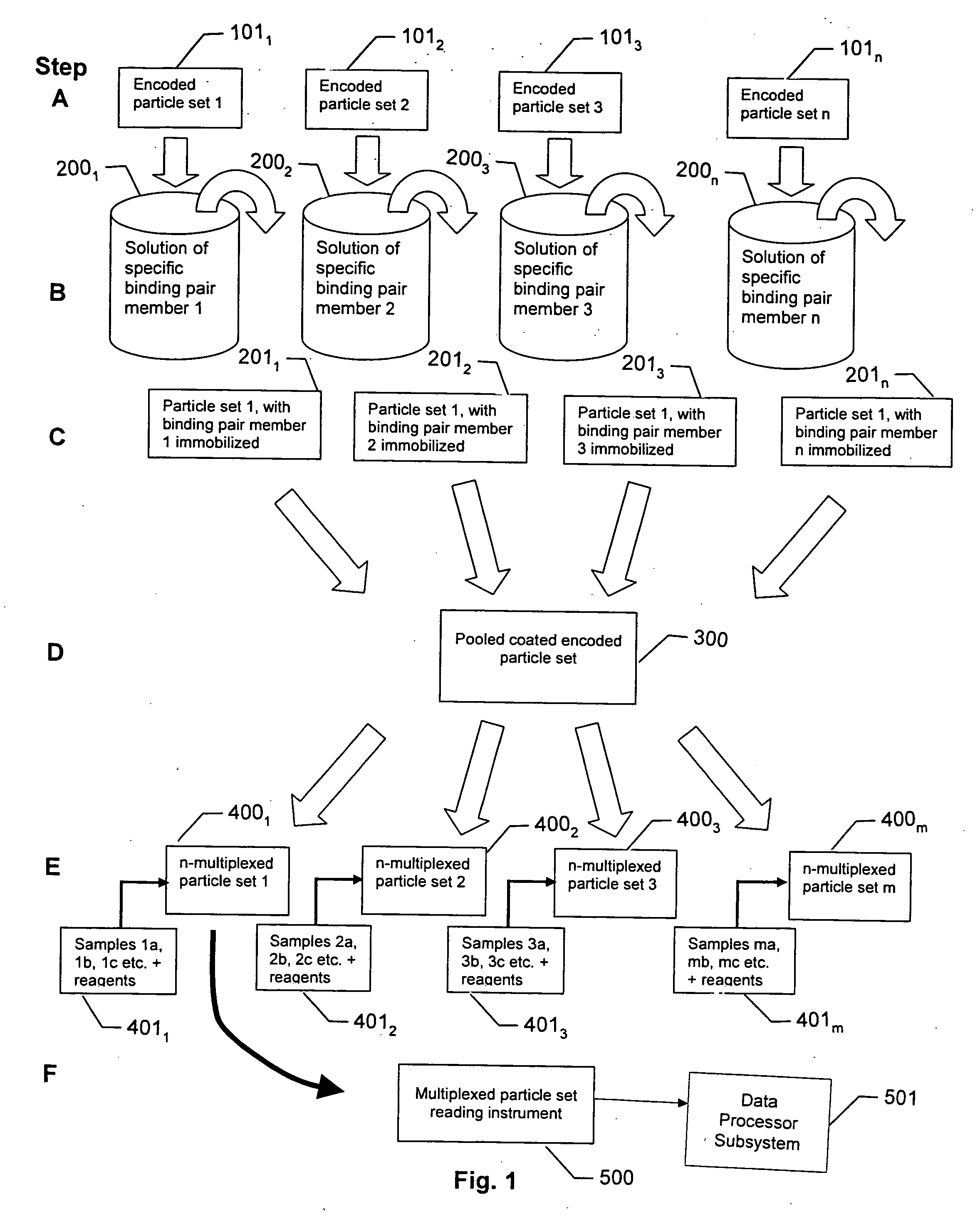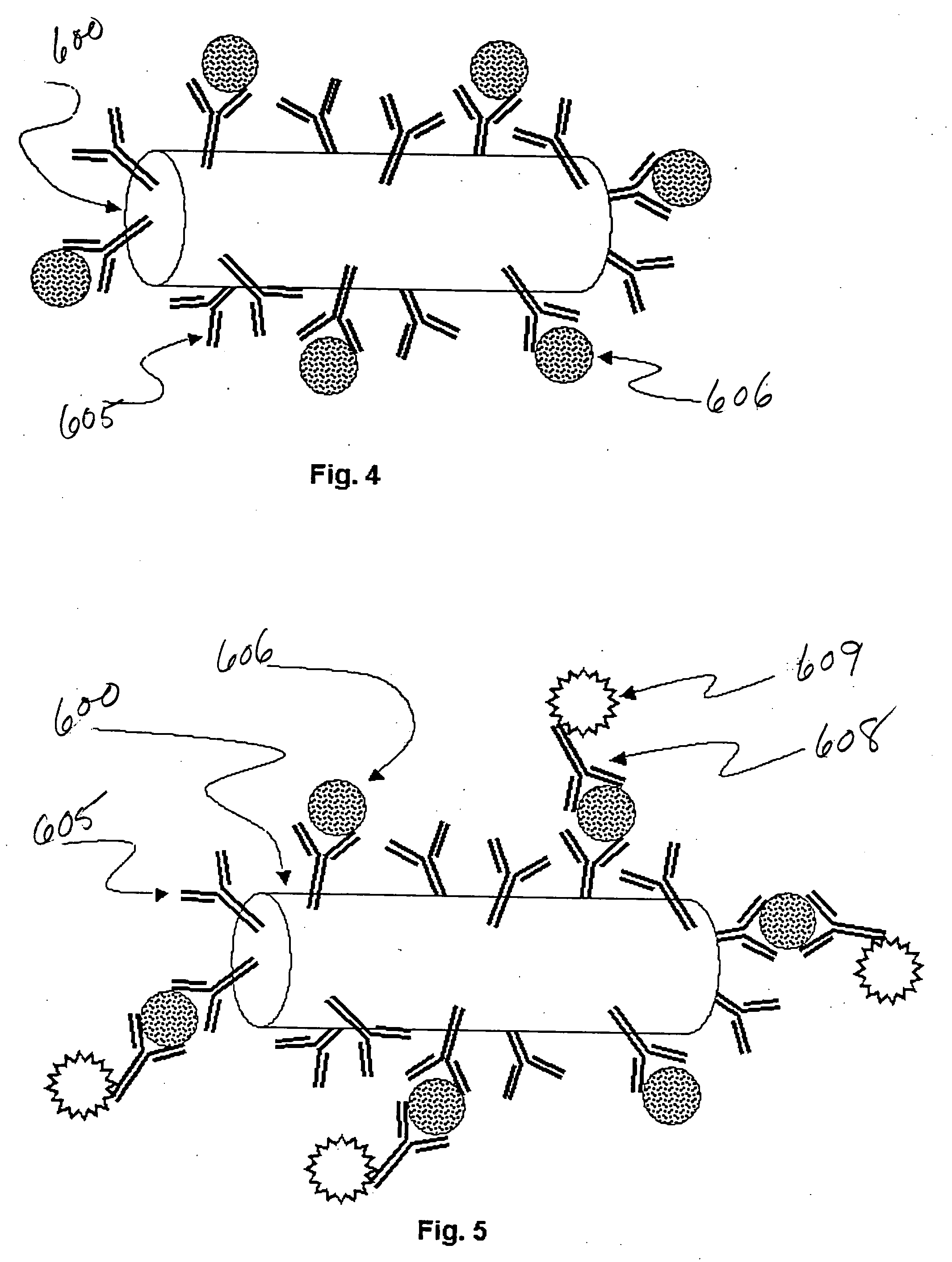Particle-based multiplex assay system with three or more assay reporters
a technology of multiplex assay and reporter, which is applied in the field of multiplex assay systems, can solve the problems of affecting the concentration of binding pair members, requiring specialized equipment, and complex collection of data from microarrays, and achieves the effect of increasing the number of snps
- Summary
- Abstract
- Description
- Claims
- Application Information
AI Technical Summary
Benefits of technology
Problems solved by technology
Method used
Image
Examples
Embodiment Construction
[0037] Referring to FIG. 1, the steps of preparing and performing an encoded particle multiplex assay involving n analytes of interest and three or more reporter molecules are described. The various steps are thereafter described in more detail with reference to FIGS. 2-5, and reading systems for the multiplexed assays are described with reference to FIGS. 6A-9.
[0038] Referring now to FIG. 1, in step A particles are encoded in a known manner to produce n particle sets 1011 . . . 101n, in which the particles are encoded with particle IDs. The particles in a given set are identically encoded with a particle ID, and no two sets utilize the same particle ID. The particle IDs may be, for example, holographic bar codes, etched gratings, ratios of two colors of fluorescent dyes, quantum dot emissions, and so forth.
[0039] In Step B the respective encoded particle sets 1011 . . . 101n are reacted with solutions 2001 . . . 200n of specific binding pair members, for example, protein-specific...
PUM
| Property | Measurement | Unit |
|---|---|---|
| length | aaaaa | aaaaa |
| length | aaaaa | aaaaa |
| length | aaaaa | aaaaa |
Abstract
Description
Claims
Application Information
 Login to View More
Login to View More - R&D
- Intellectual Property
- Life Sciences
- Materials
- Tech Scout
- Unparalleled Data Quality
- Higher Quality Content
- 60% Fewer Hallucinations
Browse by: Latest US Patents, China's latest patents, Technical Efficacy Thesaurus, Application Domain, Technology Topic, Popular Technical Reports.
© 2025 PatSnap. All rights reserved.Legal|Privacy policy|Modern Slavery Act Transparency Statement|Sitemap|About US| Contact US: help@patsnap.com



